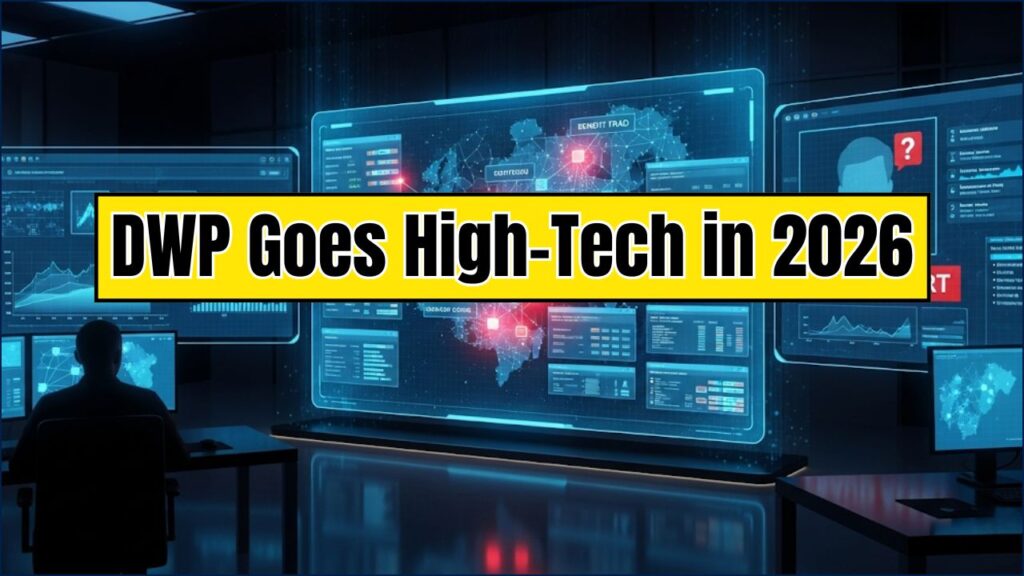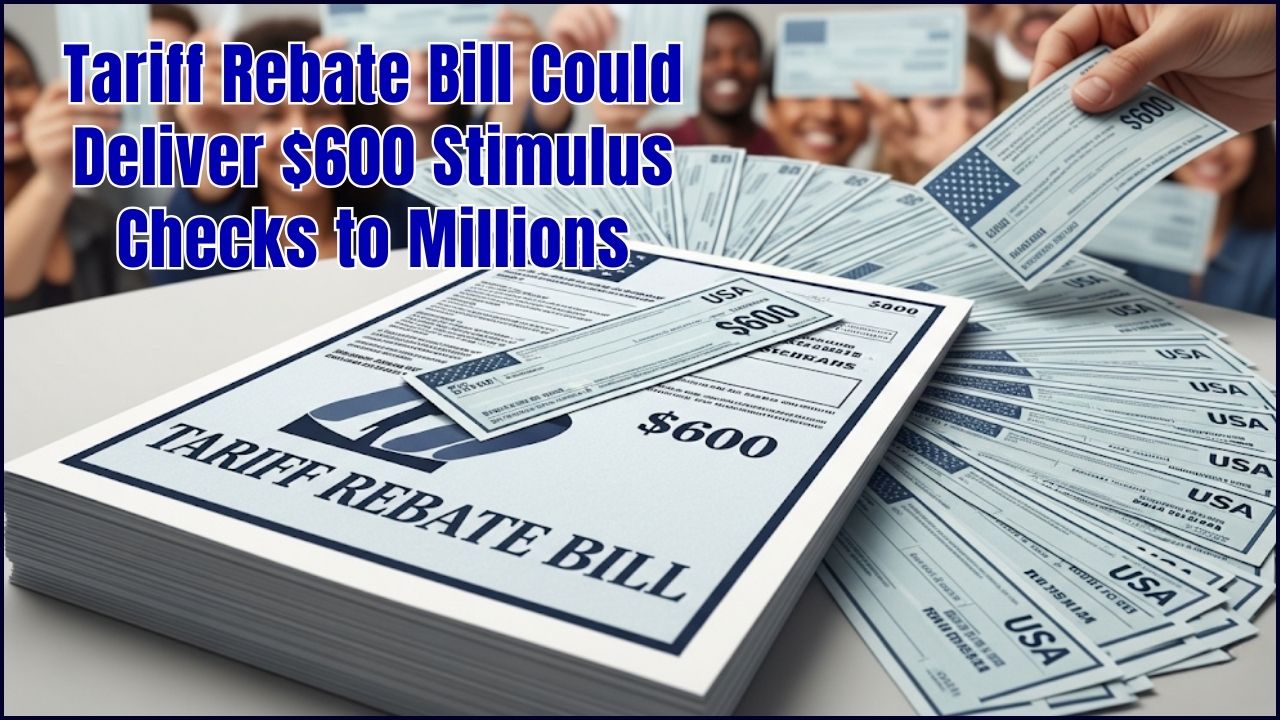When it comes to public benefits, trust is everything. Folks pay into the system expecting that those who really need help get it—and that fraudsters don’t drain taxpayer dollars. That’s why the Department for Work and Pensions (DWP) is rolling out a brand-new high-tech system in 2026 that will automatically flag benefit fraud. It’s making waves in the U.K., and for good reason.

Before you picture Uncle Sam—or in this case, the DWP—spying on your Starbucks order, let’s break down what’s really happening. This isn’t about peeking into every dollar you spend. Instead, it’s about smarter fraud detection, tighter data checks, and human oversight. Let’s unpack what’s changing, why it matters, and what families, professionals, and businesses should know.
DWP Goes High-Tech in 2026
| Aspect | Details |
|---|---|
| Launch Year | April 2026 |
| What It Does | Banks flag accounts that may exceed benefit eligibility (e.g., savings over £16,000 for Universal Credit) |
| Data Shared | Only limited info (account ID, savings status) — no spending details |
| Programs Affected | Universal Credit, Pension Credit, Employment and Support Allowance (NOT State Pension) |
| Projected Savings | Up to £940M over 5 years; ~£500M annually once fully implemented |
| Oversight | Independent reviewer reports annually to Parliament; strict code of practice |
| Impact | Could identify 50,000–100,000 overpayments annually |
The DWP’s high-tech fraud system in 2026 is a major leap forward. Done right, it could protect billions, strengthen trust, and make sure benefits go where they’re needed most. Done wrong, it risks false flags and eroding public faith.
The key message: it’s not Big Brother, it’s smart verification with humans in the loop. For families, transparency is your best defense. For professionals, be ready—this shift will reshape the benefits landscape.
A Quick Look Back: How Fraud Was Handled Before
Traditionally, DWP fraud investigations were reactive. Investigators might follow up on tips, check records, or audit specific cases. This worked—but it was slow, resource-heavy, and often caught fraud late, after thousands had already been overpaid.
Fast forward to 2026, and the game changes. With AI-powered tools and automated checks, fraud flags can pop up instantly. It’s the difference between spotting a shoplifter days later on CCTV versus having a store alarm go off as they walk out.
How the New System Works
Here’s the step-by-step:
- Eligibility Verification Notices (EVNs) get sent to banks.
- Banks check accounts tied to benefit payments.
- If balances exceed legal thresholds (like £16,000 in savings), a red flag is raised.
- That info goes back to the DWP.
- A human caseworker reviews the alert and decides if further investigation is needed.
Bottom line: computers flag, humans decide.
Real-Life Example: Meet “Jane”
Imagine Jane, a single mom on Universal Credit. She inherits £20,000 from her aunt. Universal Credit rules say she can’t keep benefits with savings above £16,000.
- Today: If Jane doesn’t report the change, the DWP might not notice for months.
- 2026 and beyond: Her bank flags the account as crossing the savings limit. The DWP gets notified, and a caseworker checks whether Jane reported the change. If not, her case is reviewed.
It’s not perfect, but it’s faster, fairer, and reduces system abuse.
What Data Is (and Isn’t) Shared
Let’s clear up one of the biggest myths—the DWP will not see your daily spending habits.
- Shared: Name, account ID, whether balances exceed thresholds.
- Not Shared: Starbucks orders, Netflix subscriptions, Amazon shopping, ethnicity, health records.
Oversharing is actually illegal, and banks can face penalties.
Programs Affected
The rollout is limited:
- Universal Credit
- Pension Credit
- Employment and Support Allowance (ESA)
Not affected: State Pension. Seniors, you’re safe from this policy.
Comparisons: U.K. vs. U.S.
Across the pond, the U.S. has long used data-matching programs to prevent fraud in SNAP (food stamps), unemployment insurance, and Medicaid. For example, state agencies run payroll data against unemployment claims to check if someone is “double dipping.”

The U.K.’s new system is essentially catching up, using automation to tighten fraud detection in real time.
Potential Impact
The numbers are big:
- £940 million saved over 5 years.
- About £500 million annually once fully live.
- 50,000 to 100,000 overpayments caught each year.
That’s money redirected back to genuine claimants—and taxpayers.
Concerns and Criticism
Not everyone’s buying in. Civil liberties groups like Big Brother Watch and Amnesty International have raised red flags of their own. Their concerns:
- AI bias in DWP risk models (previous systems misfired).
- Impact on vulnerable claimants wrongly flagged.
- “Privacy creep” — where limited checks expand into wider surveillance.
Some even compare it to the Horizon scandal, where faulty tech wrecked lives. Critics argue: if oversight isn’t ironclad, history could repeat itself.
Traditional vs. High-Tech Fraud Detection
| Method | Historical Approach (Pre-2026) | New System (2026 Onwards) |
| How it works | Manual checks, relying on tip-offs, or random reviews. A claim is investigated only after a suspicion is raised. | The system automatically matches and analyzes data from different sources to proactively flag claims. |
| Data sources | Claimant self-reporting, occasional cross-checks with HMRC data. | Claimant data cross-referenced with information from banks and other third-party organizations. |
| Key focus | Reacting to suspected fraud and human error. | Proactively detecting potential fraud and preventing overpayments before they happen. |
| Speed | Can be a long, drawn-out process. | Faster, more efficient detection. |
Practical Tips: Avoiding False Flags
Here’s a quick checklist for claimants:
- Know your savings limits (e.g., £16,000 for Universal Credit).
- Report changes early—inheritance, lump sums, or big payouts.
- Keep records handy—if flagged, you’ll want proof ready.
- Ask for help—appeal or seek advice if you think a flag is wrong.
- Stay updated—watch rollout announcements starting April 2026.
Top 3 Myths About the New DWP System
- Myth #1: The DWP will have full access to my bank account.
- Fact: The DWP will not be able to see your spending habits or transaction history. They will only receive limited, specified information from banks to identify if an account holder has exceeded benefit eligibility criteria, such as savings limits.
- Myth #2: The system will automatically stop my payments.
- Fact: A human will always be involved in any decision that affects a person’s benefit claim. The automated system simply flags a case for a human caseworker to review and investigate further.
- Myth #3: It’s all about catching claimants out.
- Fact: The DWP has stated the system will also help prevent overpayments caused by simple errors, which can lead to significant debt for claimants. The goal is to ensure people receive the right amount of money at the right time.
Professional Insights
- Financial Advisors: Help clients plan savings or inheritance to avoid unintentional disqualification.
- Employers: Payroll changes could ripple into benefit claims—staff may need guidance.
- Lawyers & Advocates: Be ready for more appeals; understanding DWP’s tech will be crucial.
- Banks & Fintechs: Must comply with EVNs while protecting customer data—legal risk is real.
Future Outlook: What Comes After 2026?
This rollout is likely just the beginning. Future fraud-fighting tools could include:
- Biometric verification (face ID for benefit logins).
- Cross-border data sharing (for claimants with overseas ties).
- AI pattern detection (spotting suspicious financial flows).
The big question: can technology fight fraud without hurting the innocent? That balance will define the next decade of social security.
FAQs
Q1: Will the DWP see every bank transaction?
No. Only basic account info and savings thresholds are shared.
Q2: Can a computer cut off my benefits automatically?
No. A human caseworker always makes the final call.
Q3: Does this affect pensions?
Not the State Pension. Only Universal Credit, Pension Credit, and ESA.
Q4: What if I get wrongly flagged?
You can appeal, request reviews, and get independent oversight.
Q5: Is this permanent financial surveillance?
No. Banks don’t stream data 24/7—checks are targeted under EVNs.












